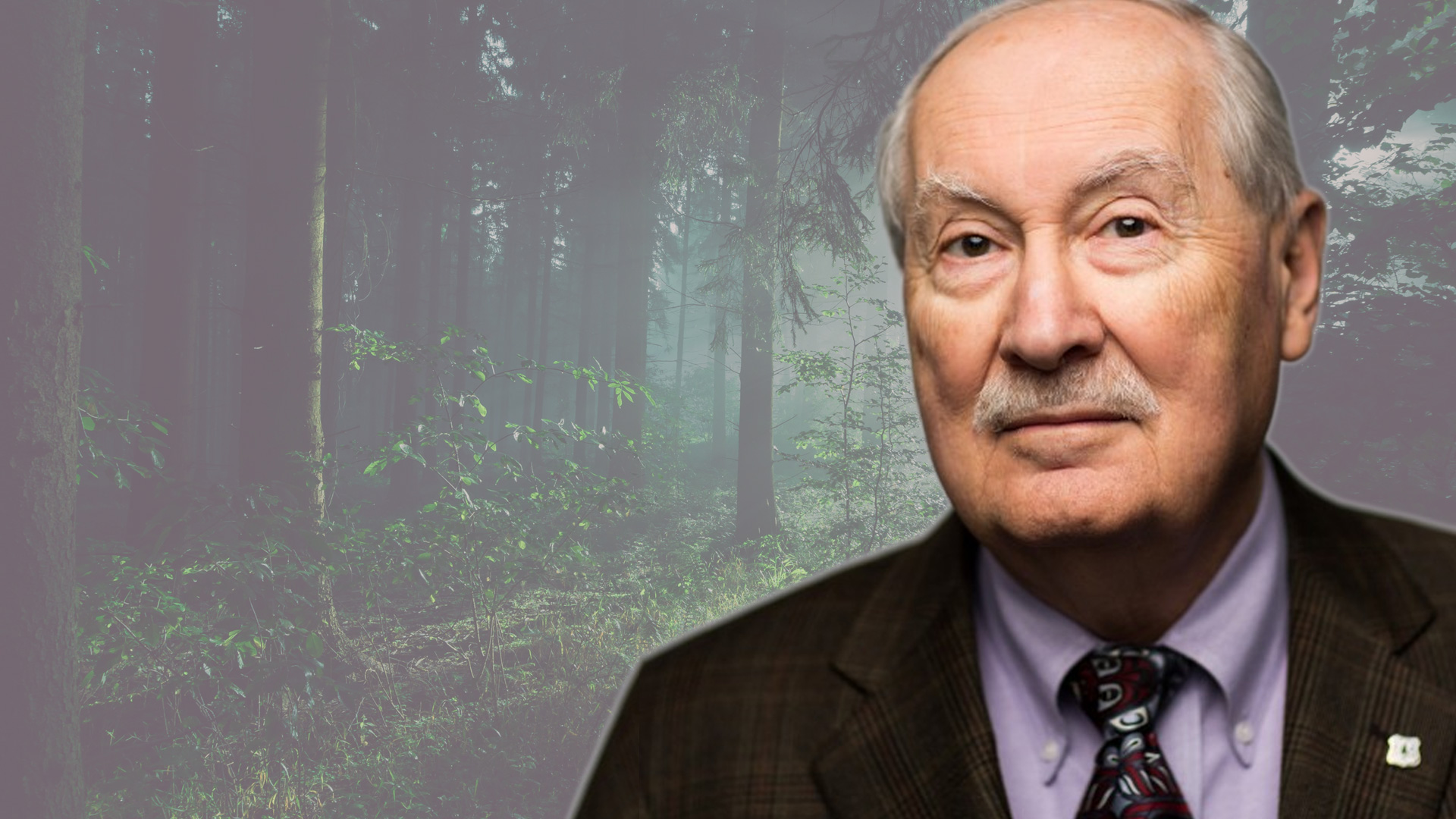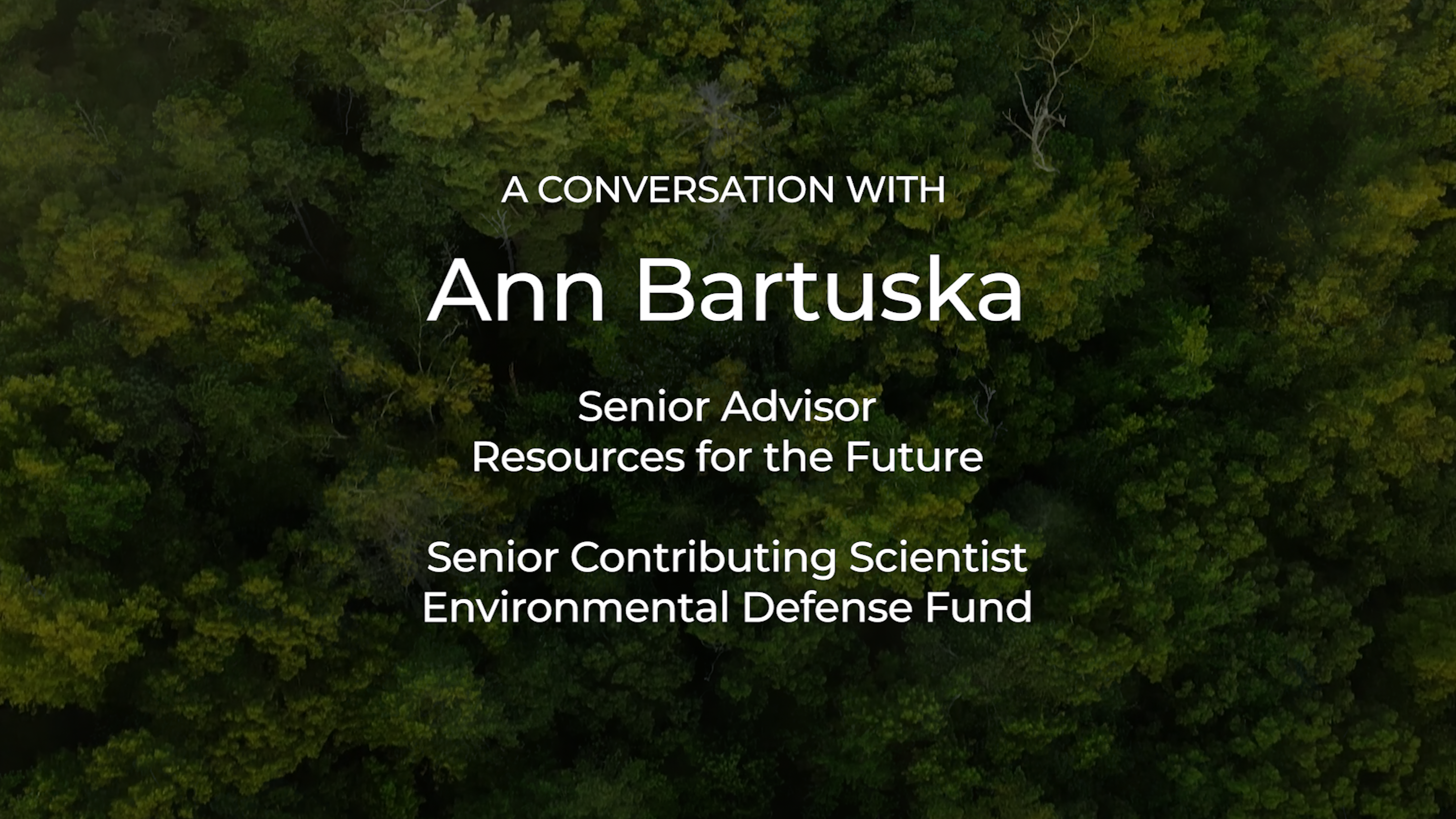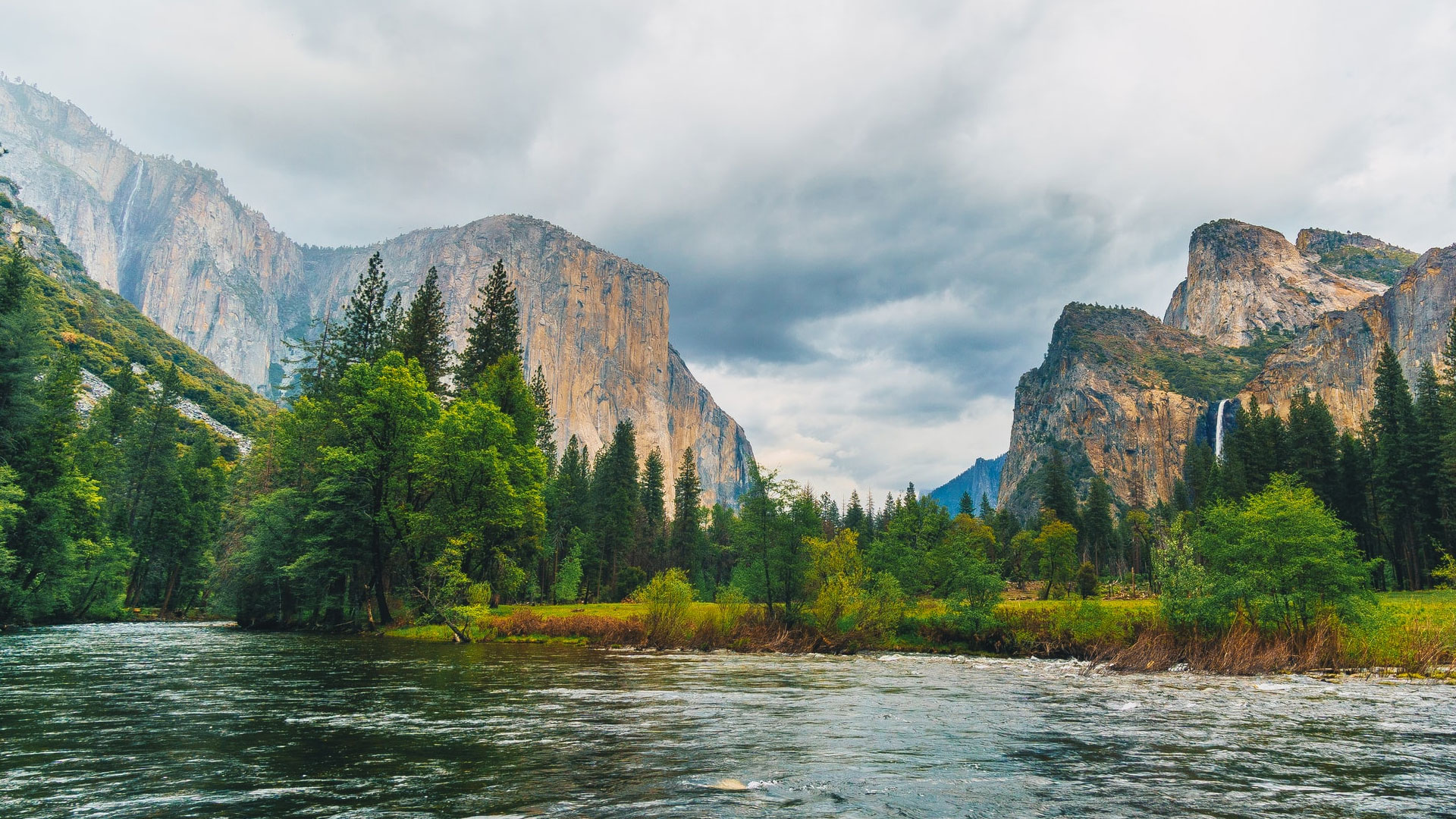A CONVERSATION WITH DR. JERRY F. FRANKLIN
“The father of new forestry.”
What first inspired you to become a conservationist?
My inspiration came when I was 7 or 8 years old, camping with my parents in old-growth forests. I discovered that people got paid to work in the woods! I made a commitment to forests; to spend my life doing whatever I could to further their interests. I went to college at Oregon State University where I earned two degrees, a B.S. and an M.S. in forestry, and then I got a PhD in Ecology from Washington State University. I then spent 35 years with the US Forest Service Research Organization, and later transitioned to a tenured university professorship at the University of Washington.
What is the current state of forests in the US? What threats, opportunities, and policies are in place?
We’re fortunate that we made a decision at the end of the 19th century to conserve some lands for the public. This gave us the national forests, which are an incredible backbone.
We’ve done a reasonable job of stewardship, particularly as we learn more and more about the forest. However, there are some real problems. One of them is that pests and pathogens have been introduced to the eastern forests, and we’ve lost a lot of their capacity. Another problem is that in the northwest, some of our most productive forest lands are in the hands of timber investment management organizations and real estate investment trusts.
I refer to the management they do as being socially under-performing. These are very productive lands that are managed in a way that focuses on return on capital. For that reason, they aren’t capable of doing more for society, including in terms of wood production and carbon sequestration.
How important are US forests in the fight against global warming?
Temperate forests are extremely important. They’re important from a standpoint of climate change, but also, the vast majority of civilization exists in these temperate regions. So, they are of tremendous importance in terms of the health of temperate societies.
I like to brag about the northwestern Douglas Fir and Hemlock forests because they can sequester a hell-of-a lot more carbon per-acre than tropical forests can. Here in the Northwest, we are able to grow forests that are the ultimate endpoints of what vegetation can do in terms of sequestering carbon.
Watch the full interview of Jerry F. Franklin!
Are our public lands doing a good job of capturing and storing carbon dioxide? Can we do better?
We haven’t been doing a good job, but we’re reorienting ourselves, particularly in terms of the national forests. We’ve undergone major changes in the way we manage them. This change came about as a result of the National Forest Management Act of 1976. The agency shifted from a focus on timber harvest to actually conserving the ecosystem. Now, they’re not managing them to max out wood production, but to maintain all the capabilities of those forests.
Over half of the forest land in the US is owned by small, non-industrial, private landowners. The wonderful thing about those people is that they are not primarily interested in trying to make money off of those forests. Economics is a consideration, but they are really interested in other values. The aesthetic values, wildlife values, the nature services that they get from their land. Those landowners are very open to managing forests in ways that conserve their full array of values.
Management by the Real Estate Investment Trust and timber investment management organizations is constrained because their goal is to maximize return on capital. This ultimately means they can’t manage the forest for long periods of time because of the accrued interest.
Everyone thinks that planting trees is a climate solution they can get behind, but almost no one talks about protecting existing forests. Should I be out planting trees or should I be protecting forests?
The most important thing you can do [to combat climate change] is protect existing forests. Planting trees is just great, I used to do it as a boy scout. But as far as influencing the climate and sequestering carbon, it takes decades for those trees to have any consequence whatsoever. This is one of the reasons why my major collaborators are strong advocates for conserving all remaining, naturally developed forests in the Northwest, and focusing management on younger forests.
The important metric is: how many tons per-acre [of carbon] are currently stored in live and dead wood?
Besides storing carbon, what are some of the key values of forests that people don’t often realize?
In this century, the most important service provided by forests is the protection of watersheds. Forests are profoundly important in many aspects of the hydrologic cycle. One of the two reasons for the initial establishment of the national forests was watershed protection. Water is going to become absolutely critical, and we want a well-regulated supply of high quality water. We don’t want floods, and we don’t want droughts. The way to get that is through forest vegetation.
Additionally, so much of our biota depend upon forest ecosystems for their existence. Forests are also soil building, and are a soil protecting system.
Most of the services that forests provide, we don’t pay for. John Gordon, formerly the dean at Yale University, always said that the purpose of temperate forest management is to provide us the resources we need in order to protect all the other values forests provide. And that’s right; wood production enables us to do what we need to do because we don’t pay for water or carbon sequestration. We certainly don’t pay for the habitats or recreational values that forests provide.
If you try to manage the forest to maximize wood production, you marginalize all other values. You reduce the forest system’s capability of protecting watersheds, providing habitats, etc. We’ve now learned how you can manage forests to sustain all their values and still get economic return from them.
What is ecological forest management?
Ecological forest management means managing forests in a way that sustains their full array of capacities, integrity, and completeness. When we’re trying to max out wood production, we’re not sustaining the other values associated with the forest. Ecological forestry means that some of the capacity of the forest system has to be invested right back into it. We can’t harvest it all, but we can harvest part of it and still retain its incredible capabilities.
When I started out in forestry, foresters viewed forests as collections of trees and managed them for growing wood. In the last 50-60 years, we’ve begun to understand the richness and complexity of forest ecosystems. They’re a hell-of-a lot more than just a collection of trees, and we want a hell-of-a lot more out of them than just wood production. We now have a basic understanding of what that forest is doing, how it does it, how we can interact with it, and how we can restore it to be a more complete system.
Collaboration is the name of the game between human society and the forest ecosystem.
Our job is to collaborate with the forest system in ways that benefit both that forest system and us. We’ve changed everything about the world. Leaving it to nature to repair everything we’ve done – the outcome will not be what we want.
What is something that ordinary people can do to protect and restore US forests?
We all need to be activists in the political arena. We need to be very active and encourage ecologically credible management approaches. We can do this in several ways: law and regulation, incentives, and being actively engaged ourselves. We need to get more people engaged in learning about and restoring forest systems. The thing about forests and carbon policy is that there’s so many ways people can abuse policies. We have to be very well informed so that we can watch out for efforts to exploit systems.
TRANSCRIPTION: TCP Editor in Chief Ellyn Lapointe
BOOK: Ecological Forest Management
Fundamental changes have occurred in all aspects of forestry over the last 50 years, including the underlying science, societal expectations of forests and their management, and the evolution of a globalized economy. This textbook is an effort to comprehensively integrate this new knowledge of forest ecosystems and human concerns and needs into a management philosophy that is applicable to the vast majority of global forest lands.
Ecological forest management (EFM) is focused on policies and practices that maintain the integrity of forest ecosystems while achieving environmental, economic, and cultural goals of human societies. EFM uses natural ecological models as its basis contrasting it with modern production forestry, which is based on agronomic models and constrained by required return-on-investment.
RELATED ARTICLES:
Become a Climate Actionist
#climateactionist
One of the first things you do to start your Climate Actionist journey is connect with, engage with, and even join leading climate organizations. At The Copernicus Project, we are committed to only sharing information and resources from organizations, experts, companies, communities, and people that we have personally researched and trust. The following list is a great place to start. We’ve broken it out by category, so you can hone in on the things you are most interested in.
In the coming weeks and months, we’ll have more ways for all of us to be actively involved in finding and supporting nature-based climate solutions. So stay tuned and sign up below to get notifications when we publish new content.






